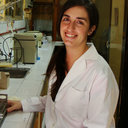Antimicrobial phenylpropanoids from the Argentinean highland plant Parastrephia lucida (Meyen) Cabrera.
Ключевые слова
абстрактный
BACKGROUND
The Argentinean highland plant Parastrephia lucida (Meyen) Cabrera is used in traditional medicine as an antiseptic and anti-inflammatory crude drug.
OBJECTIVE
To relate the antimicrobial effect of the crude drug with the constituents of the active fractions and traditional use.
METHODS
Assay-guided isolation of the methanol (MeOH) plant extract was carried out using bacteria and yeasts as target organisms. Both ATCC and local strains were included in the study. The antimicrobial fractions and compounds were detected by bioautographic assays. Minimum inhibitory concentrations (MIC) of each extract and fraction were determined and compared with reference antibiotics. Fractions were analyzed by HPLC-DAD, GC-MS, (1)H NMR and (13)C NMR.
RESULTS
From the MeOH extract of the plant, assay-guided isolation of the antimicrobial constituents led to 12 phenylpropanoids and two simple phenolics. Most of the compounds occurring in the active fractions were E-caffeoyl or E-cinnamoyl esters including prenyl and phenethyl derivatives. The MIC values of the most active fractions ranged between 12.5 and 200 μg/mL against reference strains and local isolates of Staphylococcus aureus and Enterococcus faecalis.
CONCLUSIONS
The antimicrobial effect found in the crude drug was associated with mixtures of phenylpropanoids, including prenyl and phenethyl esters of caffeic and cinnamic acids. The results support at least in part the traditional use of the plant as local antiseptic.



